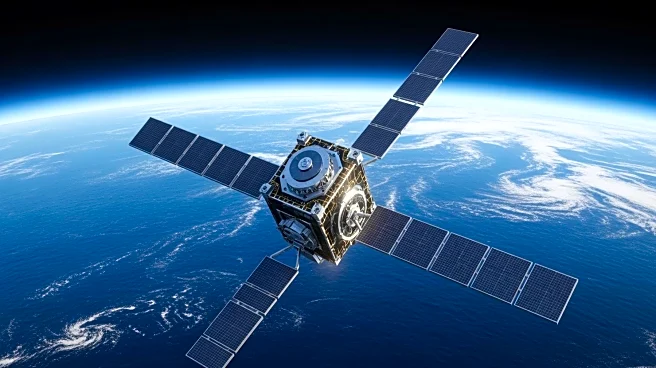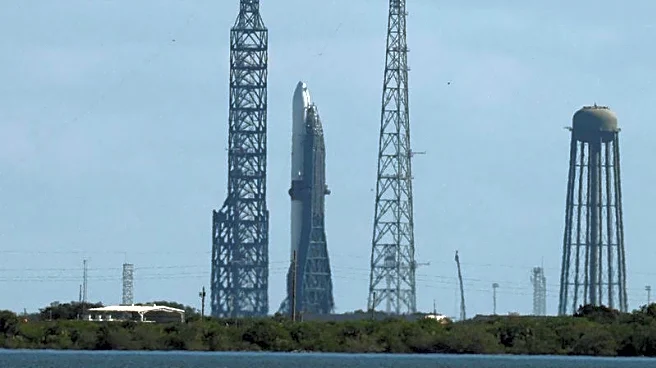What's Happening?
NASA, in collaboration with the European Space Agency (ESA), is finalizing preparations for the launch of the Sentinel-6B satellite. This satellite is designed to measure sea levels across 90% of the Earth's
oceans, providing crucial data on atmospheric temperature and humidity. The Sentinel-6B is set to launch on a SpaceX Falcon 9 rocket from Vandenberg Space Force Base in California. The launch is scheduled for November 17, 2025, following a successful Flight Readiness Review conducted on November 10. The satellite will succeed its twin, Sentinel-6 Michael Freilich, as the primary reference for global sea level rise measurements, continuing a data record initiated by the TOPEX/Poseidon satellite in the early 1990s.
Why It's Important?
The Sentinel-6B satellite's mission is vital for monitoring global sea level changes, which have significant implications for public safety, urban planning, and the protection of commercial and defense interests. Accurate sea level data is essential for understanding climate change impacts and for developing strategies to mitigate its effects. The satellite's measurements will aid in predicting weather patterns and assessing the health of marine ecosystems, thereby supporting environmental conservation efforts. The continuation of the Copernicus Sentinel-6/Jason-CS mission ensures the availability of reliable data for policymakers and scientists working on climate-related challenges.
What's Next?
Following the launch readiness review on November 15, the Sentinel-6B satellite will be launched and begin its mission to provide comprehensive sea level data. This data will be integrated into existing climate models, enhancing the accuracy of predictions related to climate change and its effects on global sea levels. Stakeholders, including government agencies, environmental organizations, and scientific communities, will utilize this information to inform policy decisions and research initiatives aimed at addressing climate change. The successful deployment of Sentinel-6B will also pave the way for future collaborations between NASA and ESA in space exploration and environmental monitoring.
Beyond the Headlines
The Sentinel-6B mission highlights the importance of international cooperation in addressing global challenges such as climate change. By pooling resources and expertise, NASA and ESA demonstrate how collaborative efforts can lead to advancements in technology and science that benefit the entire planet. The mission also underscores the role of space technology in providing critical data that informs environmental policy and conservation strategies. As climate change continues to pose significant risks, the Sentinel-6B satellite's contributions will be instrumental in shaping global responses to these challenges.












